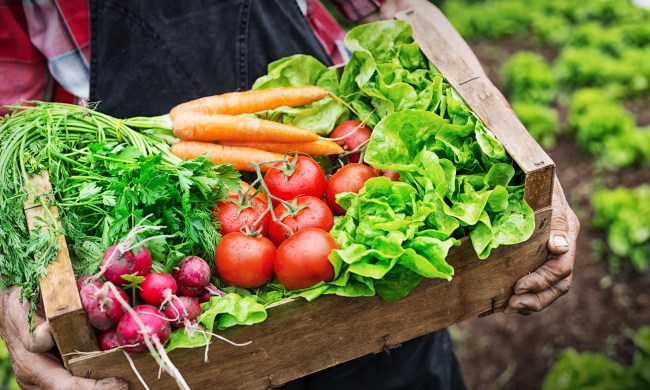It’s only May — why are we talking about leaf blowers? Well, since you’ve asked, there are actually several reasons to buy a leaf blower in the summer. If you’re in the market for a leaf blower and are looking for the best cordless leaf blower, we’ve got you covered. Leaf blowers are capable of blowing much more than leaves — even the electric models have more power than you would think these days. If you’re into taking care of your yard and want to do it more efficiently, keep reading to find out which is the best electric leaf blower and why now is the time to buy.
Why now is the time to buy
When most people think about leaf blowers, they think of huge piles of leaves, warm sweaters, and hot cocoa. But a good leaf blower is a tool that you can use year-round and buying one in the Summer months can save you money. Since most people don’t think about buying a leaf blower until their leaves take over their lives, they are the most in-demand and, thus, most expensive in the fall months.
Big box stores and hardware stores will often have the previous year’s stock on sale in the off-season months so they can get rid of it and make room for next year’s models — this a great time to get a deal on a new electric or cordless leaf blower. If you’re looking for even more savings, sometimes stores will sell you the floor model or an open box of an appliance or tool at a discounted rate.
How to pick a leaf blower
Corded or cordless? Attachments or no attachments? Electric or gas? There are so many options and choices when it comes time to buy that new leaf blower. To figure out which model and opportunities are for you, consider a few things:
Electric or gas
The biggest plus with a gas-powered leaf blower is power. Gas engines produce more power than electric motors, hands down (though electric machines are getting close). The other main advantage is that you can go wherever you want as long as you have fuel, with a gas-powered blower. Electric blowers either run on batteries or have cords and thus, limit your usage either due to the length of the cord or the charge on the battery. The amount of power you need will be related to the size of your yard — if you live in the city, you probably don’t need a professional-grade leaf blower.
Corded or cordless
You may think that we already discussed this above in the electric or gas section, but we haven’t. Obviously, if you know you want or need a gas-powered leaf blower, you can skip this section. But if you want an electric leaf blower and aren’t sure if you should get a cordless, battery-operated model or a corded model. The main point to consider here is space — if you have a huge yard, odds are you don’t have outlets strategically placed all around, so you can use your leaf blower, so you’ll need battery power to cover the entire lot. If you do choose a battery-powered machine, it’s a good idea to get an extra battery or two so you can stock up on power before you use it.
Other uses for leaf blowers
Now that you know what kind of leaf blower you want to buy and that you’re going to get a great deal on it since they’re should be on sale this season, you need to start making a list of things to do with your new toy. If you’ve ever spent time sweeping or hosing off a driveway, you’ll love your new leaf blower and the quick work it makes of grass clippings, small stones, and other debris. Adding blowing off the walkways and driveways after you mow, weed whack, and edge your lawn is a great habit to get into. Having a debris-free walkway will limit the amount of stuff that gets tracked into your house and gives your yard a well-kept look overall.
After all of this talk of leaf blowers and how handy they are year-round, it’s impressive you’re still reading. Get out there and find a deal on the right leaf blower for your needs and put it to use. You won’t regret the investment, we promise.



